








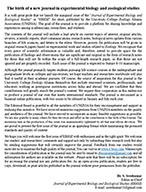
|
CiteSreekumar S. Wrecks at sea: The unseen threat to oceans and coastal lives [Editorial]. Journal of Experimental Biology and Zoological Studies 2025; 1(2):55-56.
|
Permissions
 Wrecks at sea: The unseen threat to oceans and coastal lives
Author:
S. Sreekumar
Publication:
Journal of Experimental Biology and Zoological Studies
Publisher:
University College Zoology Alumni Association (UNIZOA)
Date:
Jul 01, 2025
Copyright © 2025, UNIZOA
|
CiteSreekumar S. What good is a long neck for a giraffe? Evolutionary insights revisited. Journal of Experimental Biology and Zoological Studies 2025; 1(2):57-70.
|
Permissions
 What good is a long neck for a giraffe? Evolutionary insights revisited
Author:
S. Sreekumar
Publication:
Journal of Experimental Biology and Zoological Studies
Publisher:
University College Zoology Alumni Association (UNIZOA)
Date:
Jul 01, 2025
Copyright © 2025, UNIZOA
|
CiteT. Cherian. Toxic treasures: A review of therapeutic compounds from poisonous plants. Journal of Experimental Biology and Zoological Studies 2025; 1(2):71-85.
|
Permissions
 Toxic treasures: A review of therapeutic compounds from poisonous plants
Author:
T. Cherian
Publication:
Journal of Experimental Biology and Zoological Studies
Publisher:
University College Zoology Alumni Association (UNIZOA)
Date:
Jul 01, 2025
Copyright © 2025, UNIZOA
|
CiteKrishnakumar H. Tracking and tackling microplastics: a review of advances in detection, environmental impact, and remediation approaches. Journal of Experimental Biology and Zoological Studies 2025; 1(2):86-93.
|
Permissions
 Tracking and tackling microplastics: a review of advances in detection, environmental impact, and remediation approaches
Author:
Hema Krishnakumar
Publication:
Journal of Experimental Biology and Zoological Studies
Publisher:
University College Zoology Alumni Association (UNIZOA)
Date:
Jul 01, 2025
Copyright © 2025, UNIZOA
|
CiteKarthika PS, Jalal J, Shifana SS, Aarsha GL. Biological and lifestyle determinants of menstrual health. Journal of Experimental Biology and Zoological Studies 2025; 1(2):94-101.
|
Permissions
 Biological and lifestyle determinants of menstrual health
Author:
P. S Karthika, Jesmitha Jalal, S.S Shifana, G. L. Aarsha
Publication:
Journal of Experimental Biology and Zoological Studies
Publisher:
University College Zoology Alumni Association (UNIZOA)
Date:
Jul 01, 2025
Copyright © 2025, UNIZOA
|
CiteVeena O, Lekshmipriya CV, Swapna TS, Sreekumar S. Integrating laboratory and field studies on the biology of Oryctes rhinoceros (Coleoptera: Scarabaeidae). Journal of Experimental Biology and Zoological Studies 2025; 1(2):102-10.
|
Permissions
 Integrating laboratory and field studies on the biology of Oryctes rhinoceros (Coleoptera: Scarabaeidae)
Author:
O. Veena, C.V. Lekshmipriya, T.S. Swapna, S. Sreekumar
Publication:
Journal of Experimental Biology and Zoological Studies
Publisher:
University College Zoology Alumni Association (UNIZOA)
Date:
Jul 01 2025
Copyright © 2025, UNIZOA
|
CiteVeena O, Lekshmipriya CV, Soorya V, Greeshma, Pheko TH, Swapna TS. Comparative phytochemical analysis of Senna alata (L.) Roxb. and Gliricidia sepium (Jacq.) Walp. leaf extracts. Journal of Experimental Biology and Zoological Studies 2025; 1(2):111-18.
|
Permissions
 Comparative phytochemical analysis of Senna alata (L.) Roxb. and Gliricidia sepium (Jacq.) Walp. leaf extracts
Author:
O. Veena; C.V. Lekshmipriya; V. Soorya; Greeshma; Tschidiso Herman Pheko; T.S. Swapna
Publication:
Journal of Experimental Biology and Zoological Studies
Publisher:
University College Zoology Alumni Association (UNIZOA)
Date:
Jul 01, 2025
Copyright © 2025, UNIZOA
|
CiteSarojini H. MicroRNA: Biogenesis, significance and therapeutic benefits. Journal of Experimental Biology and Zoological Studies 2025; 1(2):119-21.
|
Permissions
 MicroRNA: Biogenesis, significance and therapeutic benefits
Author:
Harshini Sarojini
Publication:
Journal of Experimental Biology and Zoological Studies
Publisher:
University College Zoology Alumni Association (UNIZOA)
Date:
Jul 01, 2025
Copyright © 2025, UNIZOA
|
CiteBismaya BL, Syamala VS. Anthropogenic pressure and freshwater ecosystem health: A comparative study of a common pond and a temple pond in Kerala. Journal of Experimental Biology and Zoological Studies 2025; 1(2):122-28.
|
Permissions
 Anthropogenic pressure and freshwater ecosystem health: A comparative study of a common pond and a temple pond in Kerala
Author:
B. L. Bismaya; Volga S. Syamala
Publication:
Journal of Experimental Biology and Zoological Studies
Publisher:
University College Zoology Alumni Association (UNIZOA)
Date:
Jul 01, 2025
Copyright © 2025, UNIZOA
|

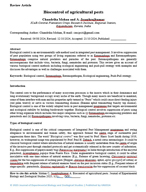
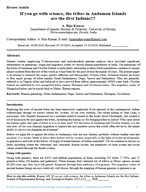


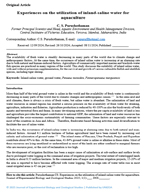

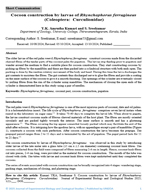
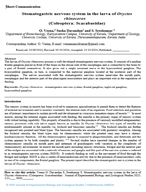



The evolution of the giraffe's neck is a complex process involving several anatomical, physiological, and behavioural modifications. However, the reasons behind the evolution of neck in giraffe and the associated evolutionary events remain unresolved. Various theories explaining evolution in general and giraffe’s neck evolution in particular are discussed in the context of present-day evolutionary genetics. This review also critically evaluates the scientific validation and logic of these theories.
Keywords: Bottleneck phenomenon, Darwinism, founder effect, genetic drift, Giraffa camelopardalis, Lamarckism, mutation theory, neural theory, population genetics, variations.
Humans have historically harnessed the inherent toxicity of living organisms for diverse applications, from hunting and warfare to traditional medicine. This ancient knowledge has significantly contributed to the development of numerous modern pharmaceuticals derived from natural compounds. While plants are essential for life, they also produce toxins as a defense mechanism, which can be detrimental upon ingestion. Paradoxically, these very compounds can offer therapeutic benefits when administered in controlled doses. The perceived "safety" of a plant is, therefore, not absolute; it is contingent upon individual factors such as sensitivity, genetic predisposition, health status, and hormonal balance. By integrating scientific research with traditional knowledge, we can better understand this dual nature of plant compounds, enabling us to both mitigate potential risks and leverage their benefits in medicinal and other fields. This underscores the intricate chemistry of the natural world and humanity's remarkable capacity for resilience and adaptation. This review further explores the toxic constituents found in sixteen common plants and their current therapeutic applications in modern medicine
Keywords: Abrus, Aconitum, Atropa, atropine, Cannabis, Catharanthus, Curarea, Datura, Digitalis, Gloriosa, hyoscyamine, Nicotiana, nux-vomica, odollam, oleander, opium, reserpine, Ricinus, scopolamine, Serpentine, yohimbine.
Microplastics (MPs) are extremely small plastic debris, less than 5 mm in size, present in the environment. They originate either from primary sources, such as microbeads, or form secondarily through the breakdown of larger discarded plastics, including consumer products and industrial waste. MPs have emerged as pervasive contaminants across marine, freshwater, and terrestrial ecosystems, and are now detected in drinking water, remote environments, and a wide range of aquatic organisms. This review consolidates current knowledge on the environmental fate, biological interactions, and detection methodologies of MPs, with a specific focus on emerging concepts such as plastisphere formation, biofilm development, the Trojan horse effect, and plastiglomerates. MPs act as substrates for microbial colonization, facilitating the spread of antibiotic resistance genes and altering microbial community dynamics. Through the Trojan horse mechanism, these serve as vectors for persistent organic pollutants (POPs), heavy metals, and pathogenic microorganisms, thereby enhancing ecological toxicity. Advanced detection methods including FTIR, Raman spectroscopy, and Py-GC-MS are discussed alongside current mitigation strategies spanning mechanical, chemical, and bioremediation techniques. Despite recent advances, challenges persist in detecting nanoplastics, standardizing methodologies, and implementing scalable remediation approaches. The review underscores the urgent need for interdisciplinary research, regulatory intervention, and public engagement to address the complex and multifaceted impacts of MPs on ecosystem and human health.
Keywords: Aquatic pollution, biofilm, microplastics, nanoplastics, plastiglomerates, plastisphere, Trojan horse effect.
The menstrual cycle is a reproductive process that prepares the uterus for a potential pregnancy, occurring regularly during a woman's reproductive years. Menstruation, marked by vaginal bleeding, is a part of this cycle and happens when pregnancy does not take place. While hormonal control, primarily involving the hypothalamic-pituitary-ovarian axis, plays a central role in orchestrating the menstrual cycle, the process itself is far more intricate. It is shaped not only by biological mechanisms but also by an array of psychological, environmental, and socio-cultural factors, all of which contribute to individual variability in menstrual experiences. This comprehensive review delves into the diverse internal and external factors that influence key aspects of menstruation, including the timing of onset (menarche), cycle regularity, duration, frequency, menstrual bleeding, and associated indicators. A deeper understanding of the contributing factors associated with menstruation may be useful as it enables more informed healthcare decision-making, supports the development of personalized approaches to menstrual health management, and contributes to broader efforts in education and public health policy related to reproductive well-being.
Keywords: Anovulation, endocrine disruptors, hormonal imbalance, lactational amenorrhea, menarche, menorrhagia, menstrual health, menstrual stress, PCOS.
The study investigates the biology of Oryctes rhinoceros, a holometabolous pest of coconut palms, with a focus on its life cycle, developmental stages, and ecological interactions. Under both laboratory and field conditions, the insect's life cycle was observed to include three larval instars, followed by a pupal stage, before emerging as an adult. The third (final) instar larvae have an extended duration of up to 120 days and are voracious feeders, consuming approximately 4.5 grams of cow dung per day. Prior to pupation, older larvae enter a non-feeding stage known as the prepupae. During this stage, they construct cocoons from cow dung, within which pupation occurs. Newly emerged adults remain inside the cocoon for 20–25 days, during which time their reproductive and digestive systems mature. Larvae and adults exhibit different feeding habits; larvae are detritivores and adults phytophagous. Field surveys have identified cow dung pits and decaying organic matter as the primary breeding sites. Under mass-rearing conditions, synchronized pupation was observed, potentially mediated by larval secretions. This study consolidates previously fragmented knowledge on the biology of Oryctes rhinoceros, highlights its status as a significant pest, and identifies opportunities for new strategies in integrated pest management.
Keywords: Adult, larva, life cycle, Oryctes rhinoceros pest, pupa, synchronized pupation
Phytochemicals remain a cornerstone of drug development due to their natural origin, cost-effectiveness, and lower toxicity. Senna alata (S. alata) and Gliricidia sepium (G. sepium), both belonging to the family Fabaceae, are recognized for their diverse bioactivities, including pharmacological and insecticidal properties. However, the limited and seasonal availability of medicinal plants like S. alata, a perennial shrub with an uneven distribution in Kerala, poses challenges for large-scale extraction of compounds with therapeutic and insecticidal value. In contrast, G. sepium is a fast-growing, widely distributed tree that can be a promising source of bioactive compounds, owing to its abundant biomass and year-round availability. The present study compares the phytochemical profiles of S. alata and G. sepium to evaluate their potential as sources of valuable bioactive compounds. In this study, sequential solvent extraction using hexane, chloroform, and ethanol was performed on dried leaves, followed by both qualitative and quantitative analyses through biochemical assays and thin-layer chromatography (TLC). The findings of the present study demonstrate substantial overlap in the qualitative and quantitative profiles of major bioactive compounds. This study further signifies the need for exploration of underutilized plant species to overcome supply constraints in phytopharmaceuticals and for facilitating drug discovery and the development of related products. Further research involving advanced analytical techniques and bioactivity assays is recommended to confirm functional equivalence.
Keywords: Bioactivity, biopesticide, Gliricidia sepium, medicinal plant, phytochemicals, Senna alata, thin layer chromatography.
MicroRNAs (miRNAs) are an abundant class of endogenous, evolutionarily conserved small non-coding RNAs approximately 22 nucleotides in length that regulate gene expression post-transcriptionally by the degradation and translation of target messenger RNAs. The small miRNA molecules play an important role in cell growth, differentiation, proliferation, and apoptosis. Up to 30% of all human genes are probably regulated by miRNAs, and each miRNA may control hundreds of gene targets. However, only a few target genes have been confirmed for a particular miRNA.
Keywords: Diagnostic marker, gene expression, microRNA, microRNA-based therapies.
This study presents a comparative analysis of the water quality and ecological status of a common eutrophic pond and a well-maintained temple pond in Kilimanoor, Kerala, India. A range of physicochemical and biological parameters were analysed to evaluate the extent of environmental stress and ecosystem health in each water body, following standard protocols. Results showed that the common pond was significantly degraded, with high turbidity and poor availability of dissolved oxygen (DO), accompanied by high biological oxygen demand (BOD) and chemical oxygen demand (COD). The pond’s surface was heavily infested with Salvinia spp., and algal diversity was low, dominated by pollution-tolerant species like Oscillatoria, Chlorella, and Nitzschia. Primary productivity was minimal, and fish diversity was limited. In contrast, the temple pond exhibited healthier conditions: clean water, low salinity, relatively high DO, and reduced BOD and COD. Biological assessments revealed a diverse algal community, absence of invasive flora, and a stable fish population, including Aplocheilus lineatus and frequent sightings of predatory birds, suggesting a robust food web. The study concludes that anthropogenic activities and poor management practices severely impact water quality and biodiversity in small freshwater ecosystems. The findings underscore the urgent need for regular monitoring, pollution control, and community-based conservation efforts to restore and sustain aquatic habitats.
Keywords: Anthropogenic impact, aquatic biodiversity, aquatic pollution, community-based conservation, ecology, ecosystem, freshwater microflora, pond eutrophication.
Scientific calculators could be used effectively in data analysis in biological research. Scientists often use calculators to perform statistical calculations like mean, median, standard deviation and more complex regression analysis to analyze experimental results. This paper outlines the necessary steps for using scientific calculators, specifically in statistical calculations, in order to make the process more accessible and beneficial for students.
Keywords: Scientific calculator, standard deviation, means, median, regression analysis.
Floods are unpredictable natural disasters and there is no way to prevent them. However, in some cases, anthropogenic factors can contribute to or accelerate these events. In Kerala, seasonal flooding has become a common occurrence in recent years, particularly during the heavy monsoons as in 2018 and 2019. Flooding causes widespread damage, including soil degradation, loss of biodiversity, extensive agricultural destruction, the spread of invasive plant and animal species, and increased sedimentation and nutrient loading. It is hoped that the restoration of degraded ecosystems may be possible through projects under the "Rebuild Kerala Development Programme" of the Government.
Keywords: Floods, invasive species, biodiversity, nutrient loading, flood mitigation.